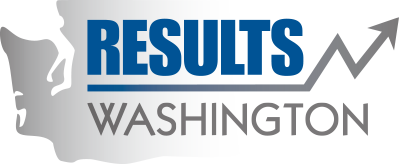Archived: State Parks Heritage sites
The Washington state park system is home to more than 50 developed state park heritage sites. These are state park sites that have natural, cultural, historical or scenic resources of statewide or national significance and are preserved and interpreted for public education and by enjoyment. Many of these sites were acquired and developed in the mid-20th century. Over the decades,the quality of these public educational opportunities has declined due to multiple factors, including the lack of adequate funding and partnership support to update and replace outdated exhibits. This measure is intended to address a documented backlog of state park heritage site exhibit replacement needs while leveraging partnership capacity to provide engaging opportunities for the public to learn and experience first-hand Washington’s rich natural and cultural heritage.To meet contemporary standards, a state park heritage site must fulfill specific criteria that include overall exhibit condition and relevance to existing audiences. State park heritage site exhibits must meet all of the following criteria to be considered “contemporary”:
- Maintain acceptable physical condition of material
- Present accurate content
- Communicate content related to the site
- Present content that is culturally appropriate.
Based on an assessment conducted in 2016, only 30 developed state park heritage sites meet these criteria. A four-year performance goal of 2016 to 2020 has been established to increase from 30 to 45 the number of state park heritage sites providing contemporary interpretive exhibits.
The state park heritage site system represents some of Washington’s most treasured lands, waters and historic places. Caring for these treasured public resources includes communicating their meaning to the public in meaningful ways. Self-guided interpretive exhibits are the most common form of interpretation used to communicate the significance and public value of the resources.
Many of the interpretive exhibits or educationalopportunities provided at state park heritage sites are outdated; some are morethan 60 years old. To effectively reach modern audiences, (Washington citizensand guests) exhibits must be relevant. Additionally, some of the contentpresented at state park heritage sites is no longer accurate. Other content,developed years ago without Native American tribal involvement, may beculturally inappropriate. The State Parks heritage site system envelopes abroad array of human- and natural history topics that provide opportunities toengage partners in the telling of Washington stories. This performance measureis structured so that the agency can forge and maintain interpretive partnershipopportunities with interested Native American tribes and with local, state andfederal agencies and non-government organizations.
This is the first year of the performance measure. A baseline of 30 state park heritage sites that provide contemporary interpretive exhibits was established based on a system-wide assessment of exhibit criteria. Future reporting will identify progress made toward measurement milestones.
In the 2017 performance period, the agency has set an action plan goal to increase the number of state park heritage sites providing contemporary interpretive exhibits from 30 to 34 sites. State Parks has developed an inventory of heritage sites that do not meet contemporary criteria. State Parks will engage in partnerships to help us improve park heritage sites. Following are state park heritage sites that are being considered for contemporary exhibit design and development:
- Deception Pass - Bridge Exhibit Wayside
- Ginkgo Petrified Forest –Natural Area Exhibit Wayside
- Kukatali Preserve –Multiple Exhibit Waysides
- Moran – Mount Constitution Tower Exhibit Wayside
- Olmstead Place –Homestead Cabin Exhibit Wayside
- Steptoe Battlefield - Exhibit Wayside
Nearly all exhibit development processes include gathering ideas and feedback from partners. State Parks is seeking opportunities to include information from partnering agencies (subject matter experts), friends groups, non-government organizations, as well as sovereign governments (tribal governments) to improve the quality of educational opportunities that can be provided through state park visits. Additionally, we are seeking opportunities to engage educational organizations (Office of the Superintendent of Public Instruction (OSPI), school districts, etc.) to provide opportunities for students to learn and experience Washington’s rich human and natural history by visiting state park heritage sites. If you’re interested in learning more about how to support educational programming instate park heritage sites, visit online at: http://parks.state.wa.us.
If you would like to offer your volunteer services at a state park, you can find more information at http://www.parks.wa.us/volunteers or call (360) 902-8612 to volunteer at your favorite park.
Please visit the Washington State Parks website for more information about State Parks free days: http://www.discoverpass.wa.gov/faq/#freedays
